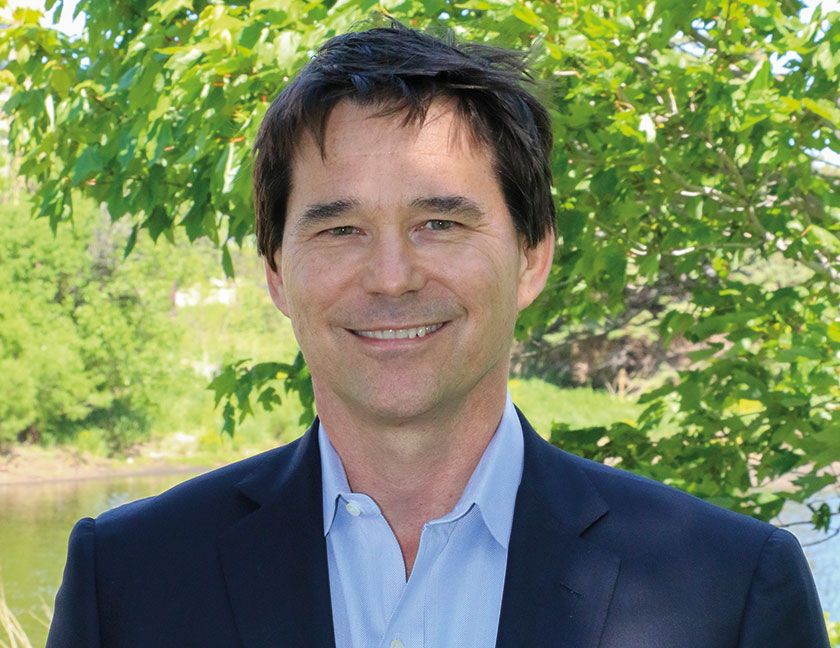In a world where newspapers are branding judges ‘enemies of the people’ and fake news dominates public discourse, these days the media itself is the story.
In-house legal teams at major newspapers are on the frontline, with general counsel moving away from the more traditional defamation work to face fresh challenges and regulatory scrutiny brought about by the constantly morphing nature of the industry. Much of it hinges on the question of how newspapers plan to survive in a predominantly digital world.
Tom Cassels, partner at Linklaters and an experienced media lawyer for the BBC, summarises the issue for media outlets: ‘People younger than me tend to think: “If it’s on the internet, it should be free.” That presents a challenge. If you want to be relevant you don’t want to be behind a paywall. But at the same time, how do you get paid?’
Shutting down the presses
The new digital dynamic has instigated a change in work for media lawyers. There has been a fall in the volume of defamation cases that are being fought on behalf of newspapers and, for some, this is a direct consequence of the steady decline of print journalism.
Gill Phillips, director of editorial legal services at The Guardian, believes that the fall in defamation claims can be attributed to the provisions laid out by the Defamation Act 2013. ‘It’s knocked out some of the more trivial cases. People are also more realistic now about settling things without getting too bogged down in legal actions.’ For Phillips and her small legal team, which is shared with group commercial legal director Sarah Davis, day-to-day work is instead centred on pre-publication legal checks and dealing with complaints on open justice issues.
Cassels concurs on the decline of defamation: ‘I don’t think private litigation is in anyone’s interest. It costs a fortune and no-one ever feels hugely vindicated by it except in exceptional cases.’
In May 2016, the Daily Mail and General Trust issued a warning to investors after recording a 29% drop in profits. The decline was attributed to a fall in print advertising. While profits at the Daily Mail were down, for the year 2016 overall revenues were up marginally from £1.8bn to £1.9bn. Crucially, over half (51%) of revenues were generated from the Daily Mail’s digital offering. As stated in its financial report for 2016, MailOnline is the world’s most visited English language newspaper website. In fact, its revenues for the year helped offset the deterioration in incomes from print advertising and circulation.
People tend to think: “If it’s on the internet, it should be free.” If you want to be relevant you don’t want to be behind a paywall. But how do you get paid?
Tom Cassels,
Linklaters
The decision to put digital first is an approach shared by industry competitors. News UK, publisher of The Times, The Sunday Times and The Sun, made the decision in November 2015 to scrap The Sun’s paywall. As a result, monthly unique visitors to the website rose from 19 million in October 2015 to 42 million in June 2016. The notable exception is The Times, which still uses the paywall and subscription system. News UK GC Angus McBride, who was appointed in 2016 and advised Rebekah Brooks during the phone-hacking trial while still a partner at Kingsley Napley, highlights the contrast: ‘The Times has made a great success out of the paywall because people realise the content is the best. The Sun wants to have reach and to be popular. The Times subscriptions are growing, but it works better in that way.’
The Guardian has opted for a similar approach to its peers, choosing to offer its online content for free, albeit with the option to make a monetary contribution. For Phillips, the need to digitise news is ‘something that no print newspaper can ignore’. She adds: ‘The Guardian has been looking digitally for a long time now. It’s been two or three years since The Guardian put digital first.’
While not matching the levels of traffic seen by MailOnline, The Guardian has also seen startling online interest. On 4 April 2016, the first day that the Panama Papers investigations worked a trail back to Vladimir Putin, 10.4 million unique visitors flocked to the site, with 35 million page views in total. On the day following the EU referendum, 24 June 2016, The Guardian recorded its biggest-ever traffic day with over 17 million unique browsers. While these are positive statistics, the telling indicator comes from the paper’s losses of £68.7m on a turnover of £209.5m, leading to staff cuts of more than 250.
A declining print product is again a factor. Circulation fell 4% to 154,544 in 2016, languishing behind its competitors. Rates at the Daily Mail and The Sun were 1.5 million and 1.6 million respectively. Despite this, Phillips is optimistic about the future of print, given the current zeitgeist: ‘There’s been a little bit of a revival in the popularity of newspapers recently post-Trump and post-Brexit. We’ve seen vinyl, we’ve seen books. Maybe those who are saying print is ending have got it wrong.’
A fear of print decline is peripheral for McBride, with The Sun solidly the UK’s most-read newspaper. ‘Although it’s sometimes sneered at by the liberal elite, it still has a very strong popular appeal. It’s a popular newspaper in the true sense, which is sometimes unpopular with some sections of society.’
Faking it
The notion that the current media climate could instigate a revival in the industry is one that is shared by media lawyers in-house and in private practice. For Cassels, an upsurge in news interest has been matched by a similar spike in activism. ‘People who I wouldn’t expect normally to talk about politics and the constitutional minutiae of what’s going on in the US are engaged. There’s a lot more political activism than there used to be. My 17-year-old daughter has gone on two marches this month.’
The latest buzzword, ‘fake news’, has become shorthand for the explosion of social media coverage of events like Brexit and Donald Trump’s US election victory. Certainly, anything that could potentially jeopardise the public’s faith in news media is unwanted, more so now than perhaps ever before. As a catalyst for fake news, social media can be seen as problematic from the media’s perspective. For McBride, it is a double-edged sword: ‘Social media is a good way of getting good journalism out to people. But it is diluted more by a lot of the nonsense in there as well.’
There’s been a revival in the popularity of newspapers. We’ve seen vinyl, we’ve seen books. Maybe those saying print is ending have got it wrong.
Gill Phillips,
The Guardian
While the days of fighting five libel cases at once are probably over, that does not mean in-house media lawyers are struggling for work. According to Niri Shan, a partner in Taylor Wessing’s intellectual property (IP)/IT group, newspapers are increasingly replacing defamation disputes with data protection matters, in addition to copyright complaints, privacy disputes, harassment allegations and even terrorism-related legislation.
The phone-hacking scandal that brought down the News of the World in 2011 and the ensuing Leveson inquiry heightened public scepticism of the media, and as a result legislation has encouraged an increased stream of litigation to be levelled at media organisations. Section 40 of the Crime and Courts Act 2013 is currently being debated in the House of Lords, over a provision that would mean news organisations would have to pay legal costs to claimants even if they win.
McBride comments: ‘It should be repealed. It’s an appalling piece of legislation. The whole approach to regulation is a complete mess.’
Phillips says: ‘Journalists have realised that they have to go about things in a more structured and recorded way in order to defend themselves if they’re challenged down the line.’ McBride contends: ‘The tightening of privacy law has meant people can litigate far more. The legal space which we work in is definitely more difficult.’
Perhaps one of the most tangible fallouts of the Leveson inquiry was the creation of the Independent Press Standards Organisation (IPSO). A press regulator created by the press has caused controversy among some, such as The Guardian, which described the body as a ‘total failure’ in a September 2015 article. McBride is more optimistic, adding: ‘If IPSO can be seen to be encouraging low-cost arbitration, then you’ve got a regulator that works and is respected by the newspaper industry.’
The Daily Mail is more in favour with IPSO and sees it as a likeable alternative to the Royal Charter-sponsored regulatory body, IMPRESS. A January comment piece on the newly-proposed regulator carried the headline: ‘After 300 years, the freedom of Britain’s Press is in peril.’
By the book
The wider publishing industry faces plenty of its own challenges. The common theme is the shift online. Bjarne Tellmann, GC of multinational education publisher Pearson, observes: ‘We are rapidly moving from being a business that historically relied on paper and print to one that is much more diverse, with a lot of digital technologies, digital learning tools and adaptive learning. That means a fairly substantial shift in terms of what Pearson needs to be focusing on legally.’
Tellmann, who oversees a 160-strong team around the world, indicates that data privacy work takes up a lot of his team’s time alongside the expected IP disputes. With a client base mostly consisting of educational institutions, data privacy issues are prominent given Pearson’s access to students’ personal data. Pearson, which delivers the UK driving theory computer-based test on behalf of the government, has a formal legal panel arrangement in place, but Tellmann has gone about instigating an in-house strategy to move more work in-house to reduce costs.
We are rapidly moving from being a business that relied on print to one that is much more diverse, meaning a substantial shift in Pearson’s legal focus.
Bjarne Tellmann, Pearson
‘We’ve shifted our outside spend from being about 60% of our total to just under 40% today by focusing on internal expertise,’ Tellmann says. Tellmann, who is in the process of publishing his own book on how to create an outstanding legal team, tells The In-House Lawyer that Pearson is planning to launch a formal panel arrangement specifically for alternative legal providers.
Pearson tends to rely on alternative providers such as Axiom, Obelisk Support, Halebury, Counsel on Call and Lawyers On Demand, and Tellmann even describes New York-based company Hire an Esquire as ‘the Uber of alternative legal services’.
Ascential is a microcosm of the declining print narrative. Previously known as EMAP, the company has shaken off the many print titles that it used to own, such as Business Matters, SKY Magazine and Smash Hits, in favour of focusing on digital magazines and events. The company, which recently sold Health Service Journal to Wilmington in January 2017, now only owns one print title, Retail Week.
GC Nilema Bhakta-Jones says the move to digitise various publications came after canvassing consumers. ‘Some said: “Yes, digital only”, whereas others said they wanted the option to have both. We very much listened to that demographic. Digital has always been a stated objective of ours.’
Ascential is another early adaptor of New Law. Bhakta-Jones comments: ‘It’s a pacy industry with no let-up. The problem with traditional law firms is that their lawyers sometimes don’t lend themselves to a dynamic environment. The alternative guys offer a specific skillset that often doesn’t arrive in law firms.’
In contrast, Simon Dowson-Collins, GC of book publishing giant HarperCollins, says that print is alive and kicking. ‘E-books are a large part of our business, but in the last year we’ve seen significant slowdown. We’ve seen the rise, for the first time in a few years, of paper books. People still want to consume content physically; the death of the paper book has been much exaggerated.’
It’s a pacy industry with no let-up. The problem with traditional law firms is that their lawyers sometimes don’t lend themselves to a dynamic environment.
Nilema Bhakta-Jones, Ascential
In the 2016 financial year, digital sales fell to 19% of HarperCollins’ consumer revenue, down from 23% in the previous year. In addition chief executive Brian Murray indicated print sales had risen due to ‘screen fatigue’ among readers who craved the physical medium instead.
The biggest issue that lawyers in publishing face is trying to operate in the uncertainty that dogs the industry. As Dowson-Collins says: ‘You never know what’s round the corner. Is there going to be another disruptive influence on the publishing industry? I don’t know, I haven’t got a crystal ball.’
In-house lawyers’ work is undergoing a gradual shift parallel to the digital switch and an understanding of how the digital world operates is essential to help drive their companies forward. But like an ill-judged leader column or backing a stinker of a novel, the reputational damage of getting legal advice wrong in this industry can be severe.
‘It’s a harder job in-house,’ concludes Cassels. ‘You have to make or recommend business decisions you’re then accountable for. The media decisions I’ve come across are some of the hardest, because the consequences can be very significant financially and for your reputation if you get something wrong.’
There is also nowhere to hide. ‘I sit in an open-plan office next to the chief executive,’ says Dowson-Collins. ‘When you’re in private practice, you don’t see the chief executive in front of your desk at 9am saying: “Oi, I’ve got something to talk to you about.”’




 People tend to think: “If it’s on the internet, it should be free.” If you want to be relevant you don’t want to be behind a paywall. But how do you get paid?
People tend to think: “If it’s on the internet, it should be free.” If you want to be relevant you don’t want to be behind a paywall. But how do you get paid? There’s been a revival in the popularity of newspapers. We’ve seen vinyl, we’ve seen books. Maybe those saying print is ending have got it wrong.
There’s been a revival in the popularity of newspapers. We’ve seen vinyl, we’ve seen books. Maybe those saying print is ending have got it wrong. We are rapidly moving from being a business that relied on print to one that is much more diverse, meaning a substantial shift in Pearson’s legal focus.
We are rapidly moving from being a business that relied on print to one that is much more diverse, meaning a substantial shift in Pearson’s legal focus. It’s a pacy industry with no let-up. The problem with traditional law firms is that their lawyers sometimes don’t lend themselves to a dynamic environment.
It’s a pacy industry with no let-up. The problem with traditional law firms is that their lawyers sometimes don’t lend themselves to a dynamic environment.